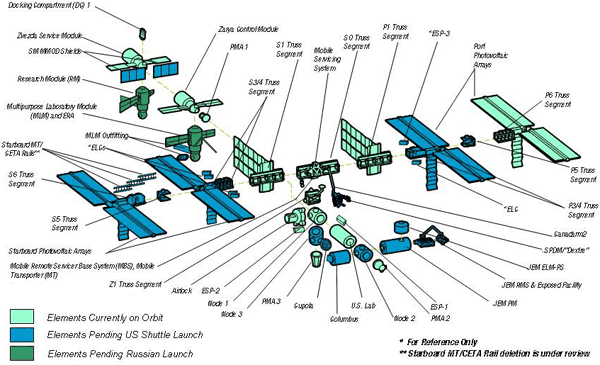Which
country constructs which part of International Space Station?
Participating
countries utilize top-level technologies for their purposes.
Japan provides Japanese Experiment Module (Kibo)
The
International Space Station components are developed by participating countries.
Basically, each country is responsible for operating the part it developed, and
the USA is responsible for overall system operation. Components will be launched
by a US Space Shuttle or Russian rockets.
 |
| Endorsed by
HOA on Mar 3, 2006 |
| <Roles
of each country> |
The
United States of America
National Aeronautics and Space Administration
(NASA) |  |
| The United States is responsible for coordinating the overall
ISS. The United States is providing the experiment module, habitation module,
trusses where robot arm will be installed, power supply system including solar
panels, and crew return vehicle for emergency use. | |
Russia
Federal Space Agency (FSA) |
 |
| Russia provides FGB launched as the first part of ISS, two
experiment modules, service module to be used as the habitation area for the early
stage of ISS and provides crew emergency return vehicle 'Soyuz'. | | |
European
countries
European Space Agency (ESA) |  |
ESA provides mainly an experiment module. The eleven participating
countries are Great Britain, France, Germany, Italy, Swiss, Spain, Netherlands,
Belgium, Denmark, Norway and Sweden.
|
|
Japan
Japan Aerospace Exploration Agency (JAXA)
|
 |
Japan provides an experiment module called Kibo which has
a unique facility exposed to the space environment.
| | |
Canada
Canadian Space Agency (CSA) |  |
Canada provides a robot arm used for ISS construction or
for device exchange. Canada provided robot arms for the Space Shuttle.
|
| |
URLs of participating countries
|

